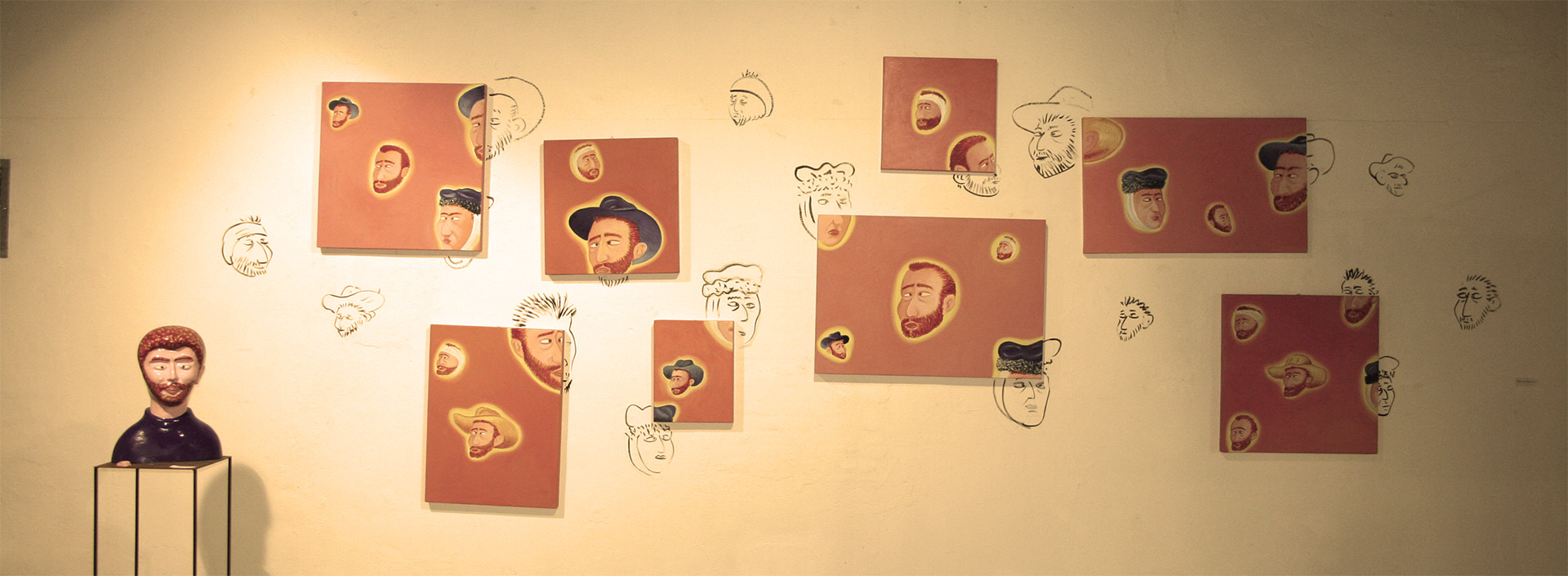
CELLA’S FIGURAL POETICS
FAIRY TALES, METAPHORES AND FIGURAL APHORISM
…When Gianni went through the rabbit hole and explored his new World, he found out that, as if by magic, he could turn ideas, names, proverbs and idioms into characters of a tale: heroes in action, heroes seeking their identities, just like the heroes of fairy tales or Bildungsroman.
In the Meta-Art & Ad’s Kingdom, where quotations are the rule – in a semiotic play which alludes to the emptiness of Sign and of its infinite reference – Gianni Cella tries to restore the metaphor and to fill it with new meanings; he tries to explore the symbols of the contemporary collective imaginary. He does it with the consciousness of the “Death of God”, of the broken-up myth of “Absolute Truth”: “Nietzsche would appreciate this form of art, because he loved the ‘wavy, dancing, sneering and childish’ art, which is still necessary to not loose the freedom of the mind to rise above things, to not distinguish players by the play itself. […] I believe that Cella’s characters could be defined figural and conceptual aphorisms, since Cella’s works offer themselves as a decentralized, plural and troubled thoughts. Figural aphorisms eschew unilateralism, and strike the myth of “Truth”, forcing the thought to go further, to give up every stable knowledge” (pp. 3-4, in M. Vescovo, Gianni Cella, Studio Vigato, Alessandria, 2005, qtes. free translation from Italian).
The melancholy of the clown
Cella’s heroes are complex and modern: heroes with ties, aliens, transgenic mutants, hybrid totems. They are heroes clouded by melancholy, aware of their fragility and of the precariousness of their relationships: “the clowns who dies on stage”. Surreality and irony mix up sweetly, making his artworks satirical and jocular like a Stefano Benni’s tale; making them angsty and unsolved like a Dino Buzzati’s tale.
The figural empathy
Gianni Cella uses to say that his images show “empathy”: empathy is that quality of “feeling” which let him affirm his love for life, despite the disruptive effects of the mass society. You cannot help but love the characters of his fairy tales: they act out our deepest fears and they depict them with bright colors and clumsy movements. Gianni Cella defuses – without any trivialization- the shadows-part, in order to integrate it and to “dream truer”.
Every day “Dreaming truer” pushes Gianni Cella to create new artworks: “There is much more cynism, but at the same time, there is a strong hope too. Fortunately, artists still believe! The art world is one of the purest world, one of the best world, after all.
[…] Art still allows to dare…” (p. 9, interview, in Gianni Cella, Studio Vigato, Alessandria, 2005, qtes., free translation from Italian).
Why the fiberglass?
The fiberglass is a material which has “no hystorical memory”: it is better suited to the modelling, because fiberglass can be worked like clay. In the traditional sculpture, the hand-sign is visible. The fiberglass, instead, transforms artworks in creatures with soft and continuous contours. The demiurgic gesture of the single artist becomes a collective demiurgic gesture, without labels, as if the characters had always existed “autonomously”, since immemorial time, precisely.
